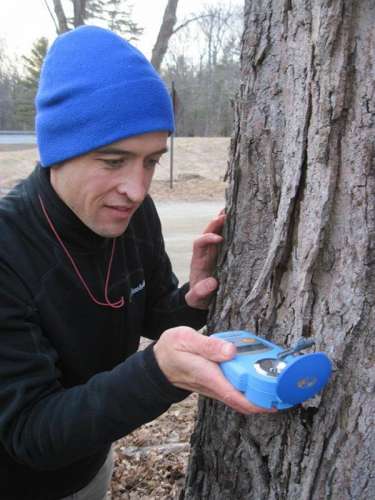Maple syrup producers no longer have to wait for spring weather to know if they are likely to have a good year. A postdoctoral researcher at Tufts University has revealed that sugar maple seed production the previous fall is another valuable metric for predicting syrup production.
“Weather affects how much sap will flow out of the tree, but sap volume is only one piece of the puzzle,” said Josh Rapp, who combined studies of maple syrup production at 28 sites in Vermont with research on mast seeding events at Harvard Forest in Petersham, Massachusetts. Sugar content is the other key variable, and “weather alone is a surprisingly bad predictor of how much sugar comes out of the taps.”
According to Rapp, trees need resources to make seeds, just as they do to make sugar, and they build up those resources through photosynthesis and the storage of carbohydrates. Seed production uses up those stores of carbohydrates, and it takes more than a year to build them back up again. When a tree produces a lot of seeds in the fall, it doesn’t have enough carbohydrates left to produce much sugar the following spring. That means the sugar content in its sap goes down.
“So if you go out in the fall and you look up in the trees at the seeds, you’ll have an idea of whether it’s going to be a particularly good or bad year in terms of sugar content,” Rapp said. “Weather during the tapping season is still going to affect how much syrup is produced, but seeing if it’s a big year for seeds explains the sugar content, which is about half of the variation in syrup production.
Based on the small seed crop among sugar maples in Harvard Forest last fall, Rapp predicts that the 2015 maple syrup harvest should be a good one.
Since seeds develop about half-a-year before the syrup harvest, Rapp hopes his study will enable maple syrup producers to plan ahead. “Maple syrup is a complicated natural resource,” he said. “I hope this research can give producers a window into the upcoming season.”
Rapp said he is particularly interested in understanding the physiological mechanisms that drive sugar production, so his next studies will involve manipulating individual trees to see how sugar content changes. He is also studying sap quality in sugar maples from Virginia to Quebec to better understand the chemical compounds that give maple sap its distinctive flavor.


